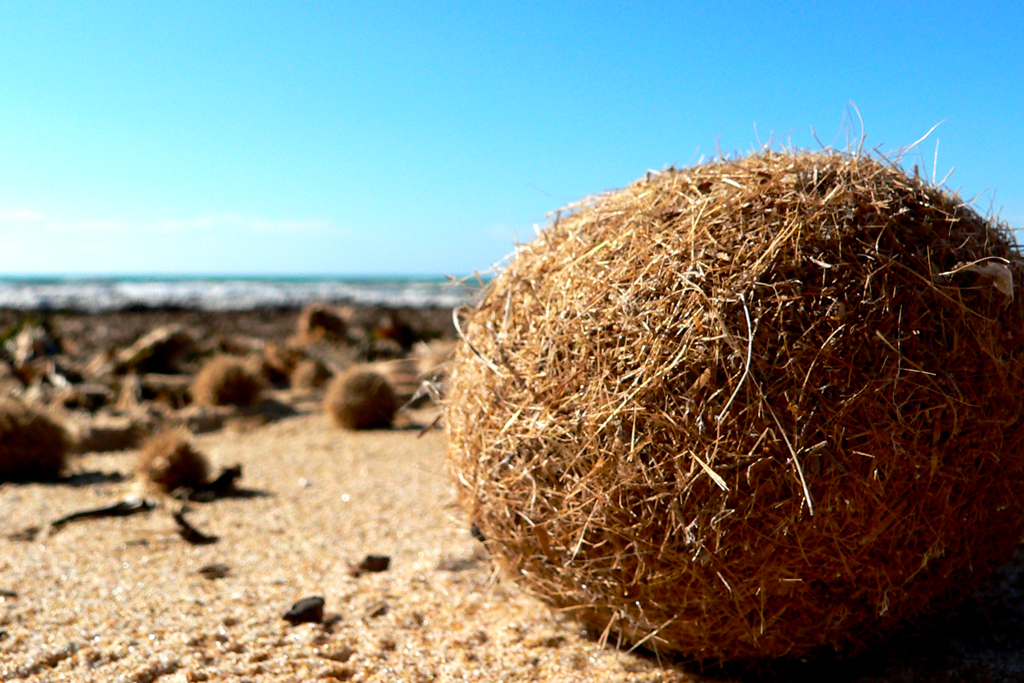Walking along the beach, especially after a storm, on the beach of Tiliguerta in Costa Rei, as well as on other beaches in Sardinia, you might encounter Posidonia Oceanica, which contrary to common belief, is not an algae but a higher plant with a well-differentiated structure, much like terrestrial plants. It has roots, an underground stem called rhizome, leaves, flowers, and fruits. The rhizomes grow horizontally and vertically, creating meadows that colonize sandy seabeds up to depths of 30 to 40 meters.
Why is Posidonia Oceanica crucial? Because…
1) it stabilizes the seabed with its roots;
2) it reduces the intensity and strength of marine currents with its leaves, which can grow up to a meter long, maintaining the health of sandy coastlines and protecting the coast from erosion;
3) the older leaves, carried by currents, are valuable as they are deposited by waves on beaches, forming thick accumulations known as banquettes, protecting the beaches from storm erosion. The more resistant fibrous residues of the leaves are compacted by the waves and returned to the beach as ‘egagropoli,’ better known as sea balls or sea potatoes.
Posidonia prairies produce oxygen and organic matter through photosynthesis: 1 square meter of Posidonia produces 14 liters of oxygen per day and represents a highly biodiverse environment due to the number and variety of animal and plant species it hosts.
It is an ideal habitat – protected by the European Union through the Habitat Directive – for seahorses, fan mussels, pipefish, and many other animals that find shelter and food here.
WARNING! Even a small boat’s anchoring, left on the prairie for an extended period, can cause irreversible damage and initiate an erosion process. The loss of just one meter of the prairie’s front can lead to the erosion of approximately 15 meters of the sandy coastline in front and jeopardize the existence of the beaches. Help us protect Posidonia Oceanica!

